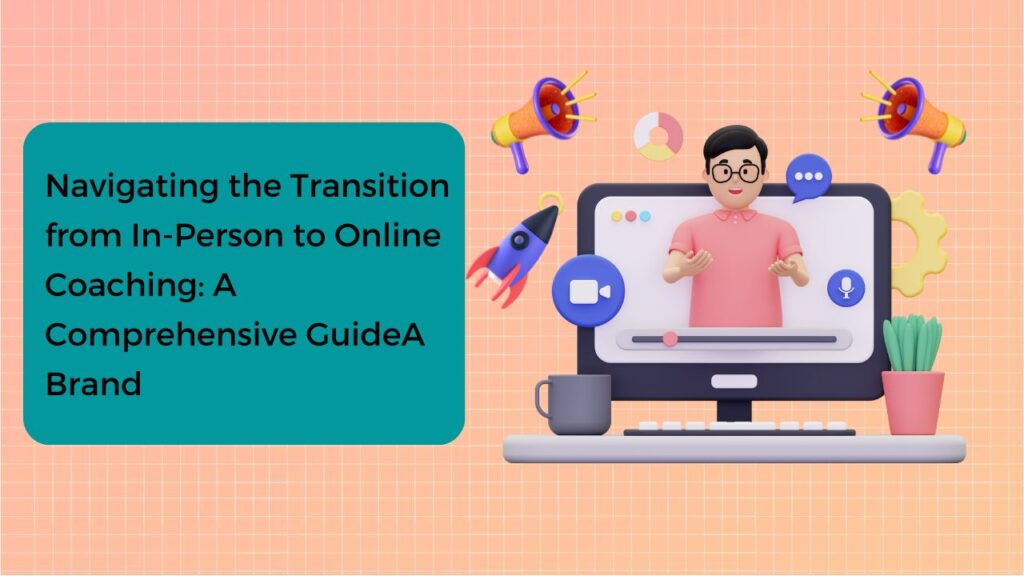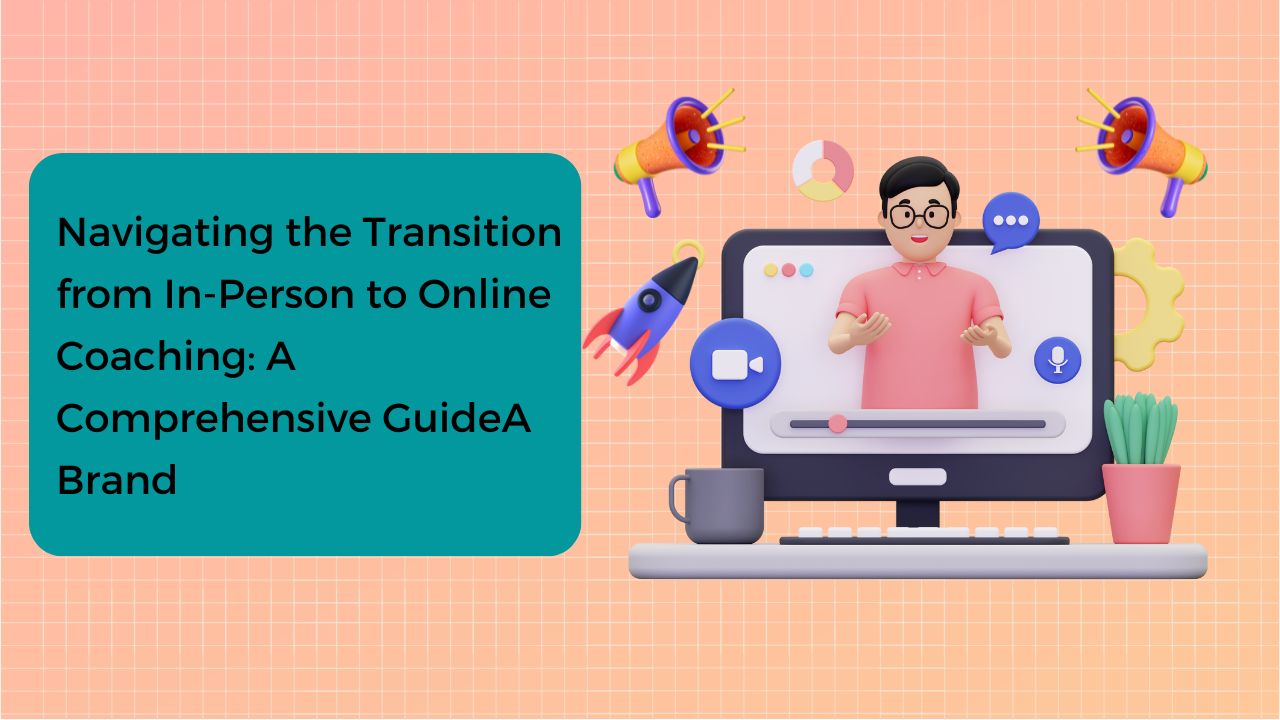
The shift from in-person to online coaching is a trend that has gained massive momentum in recent years. While transitioning can seem daunting at first, the move to a virtual coaching model opens up new opportunities for growth, scalability, and global reach.
This guide explores the key elements needed to transition your coaching practice successfully to an online platform. From technology setup to maintaining client engagement, we’ve got you covered.
1. Why Transition to Online Coaching? 📈
Moving to online coaching brings significant advantages:
- Expanded Reach: You can coach clients from anywhere, removing geographical barriers.
- Flexibility: Online coaching allows for flexible scheduling, both for you and your clients.
- Cost Savings: Eliminate the need for physical office space and reduce travel time.
- Scalability: Easily offer one-on-one, group coaching, or even create digital products for passive income.
Feature Snippet: “Transitioning to online coaching expands your client base, offers flexibility, and reduces overhead costs, making it a highly efficient and scalable business model.”
2. Essential Tools for Online Coaching 🛠️
Transitioning to an online format requires the right tools to deliver seamless sessions and manage your clients efficiently. Here’s a breakdown of the key tools you’ll need:
| Tool | Purpose | Popular Options |
|---|---|---|
| Video Conferencing | Deliver live coaching sessions | Zoom, Google Meet, Microsoft Teams |
| Scheduling Software | Allow clients to book and manage appointments | Calendly, Acuity Scheduling |
| Payment Processors | Accept online payments | PayPal, Stripe, Razorpay |
| Client Management Software | Track client progress and session notes | CoachAccountable, Practice Better |
| Digital Marketing Tools | Promote your coaching services | Mailchimp, Buffer, Canva |
Pro Tip: Invest in high-quality headphones, a good camera, and a strong internet connection to ensure professional video and audio quality for your online sessions.
3. Set Up Your Coaching Space 🖥️
Just because you’re coaching online doesn’t mean you can neglect your physical space. A professional, organized, and visually appealing environment can have a profound impact on how your clients perceive your coaching services.
Tips for Setting Up a Professional Coaching Space:
- Good Lighting: Ensure your space is well-lit, preferably with natural light or a ring light.
- Clean Background: Avoid clutter. Keep your background simple and professional.
- Comfortable Seating: Choose a comfortable chair, as you’ll be spending significant time sitting during coaching sessions.
Feature Snippet: “Your online coaching environment should be clean, well-lit, and professional to enhance client trust and comfort.”
4. Adapt Your Coaching Methods for the Virtual Space 🎥
Online coaching requires some adjustments in your approach. While face-to-face interactions offer the advantage of body language and immediate feedback, virtual coaching requires heightened communication skills.
Tips to Adapt Coaching to the Virtual Environment:
- Enhance Communication: Since non-verbal cues are limited, ensure your verbal communication is clear, concise, and empathetic.
- Incorporate Interactive Tools: Use shared screens, digital whiteboards (e.g., Miro, Google Jamboard), and polls to keep sessions engaging.
- Check-In Frequently: Ask clients for feedback during sessions to ensure they understand and are following along.
Pro Tip: Use tools like Loom or Zoom recording to offer session replays to your clients, allowing them to revisit important points.
5. Maintain Client Engagement in the Online Coaching Model 🔄
Client engagement is key to successful coaching, especially in the virtual space where distractions can be high. Here’s how to keep your clients engaged and committed:
List of Engagement Strategies:
- Set Clear Goals: Work with clients to establish clear, measurable goals for their coaching journey.
- Create a Structure: Outline the flow of your coaching sessions, so clients know what to expect.
- Follow-Up Post-Sessions: Send clients notes or action steps after each session to keep them accountable.
- Offer Accountability Tools: Provide templates, worksheets, or apps that track their progress between sessions.
- Incorporate Gamification: Introduce a sense of accomplishment by setting milestones, giving badges, or celebrating wins.
| Strategy | How It Helps |
|---|---|
| Set Clear Goals | Keeps clients focused and motivated |
| Post-Session Follow-Ups | Ensures accountability and progress tracking |
| Accountability Tools | Helps clients stay engaged between sessions |
| Gamification | Adds a fun, rewarding element to the coaching process |
Feature Snippet: “By setting clear goals, offering follow-up materials, and adding gamification, you can boost client engagement in virtual coaching sessions.”
6. Pricing Your Online Coaching Services 💵
Transitioning to online coaching may require you to reconsider your pricing structure. While overhead costs may decrease, your expertise and value remain high. Here’s how to price your services competitively without undervaluing your expertise.
Pricing Models for Online Coaching:
- Per Session Pricing: Charge for individual sessions.
- Package Pricing: Offer discounted rates for a series of sessions (e.g., 5 sessions for ₹2500).
- Group Coaching: Offer group sessions at a lower per-client cost but higher overall income.
- Subscription Models: Create monthly memberships that provide clients access to multiple resources or group calls.
| Model | Description | Pros |
|---|---|---|
| Per Session Pricing | Charge clients for each individual session. | Flexible and straightforward pricing. |
| Package Pricing | Clients pay upfront for multiple sessions at a discounted rate. | Encourages commitment and retention. |
| Group Coaching | Offer coaching to multiple clients simultaneously. | Increases income per session. |
| Subscription Models | Clients subscribe for ongoing monthly access to resources. | Generates recurring revenue streams. |
7. Marketing Your Online Coaching Services 📢
To succeed in online coaching, you need a solid marketing strategy that attracts new clients and engages existing ones. Here are some proven methods to grow your online coaching business.
List of Marketing Strategies:
- Build a Website: Create a professional website showcasing your services, testimonials, and blog content.
- Leverage Social Media: Use platforms like Instagram, LinkedIn, and Facebook to promote your coaching practice and share valuable content.
- Email Marketing: Develop a mailing list and send regular newsletters with tips, client success stories, and special offers.
- Host Free Webinars: Offer free online workshops to demonstrate your expertise and build your audience.
Pro Tip: Offer a free downloadable resource (like an eBook or worksheet) in exchange for email sign-ups. This helps build your mailing list.
| Marketing Method | Why It Works |
|---|---|
| Website | Establishes credibility and offers a platform for discovery. |
| Social Media | Engages and educates potential clients about your services. |
| Email Marketing | Keeps you connected with clients and nurtures leads. |
| Free Webinars | Demonstrates expertise and attracts a wider audience. |
Feature Snippet: “Promote your online coaching services by building a professional website, leveraging social media, and offering value through free webinars.”
8. Client Retention Strategies for Online Coaching 🔄
Retaining clients is just as important as attracting new ones. Here’s how to keep your clients returning for more sessions.
List of Client Retention Strategies:
- Regular Check-Ins: Reach out to clients between sessions to show continued support.
- Offer Additional Resources: Share articles, exercises, or exclusive content to add extra value.
- Celebrate Wins: Recognize client achievements to keep them motivated.
- Offer Loyalty Discounts: Provide discounts for clients who book long-term packages or refer others.
Feature Snippet: “Retaining clients in online coaching is all about regular communication, offering extra resources, and celebrating their success.”
Conclusion
Navigating the transition from in-person to online coaching can feel overwhelming, but with the right tools, mindset, and strategies, it’s a highly rewarding process. By building an effective online infrastructure, maintaining strong communication with clients, and marketing your services, you can create a scalable, flexible, and successful online coaching practice.
